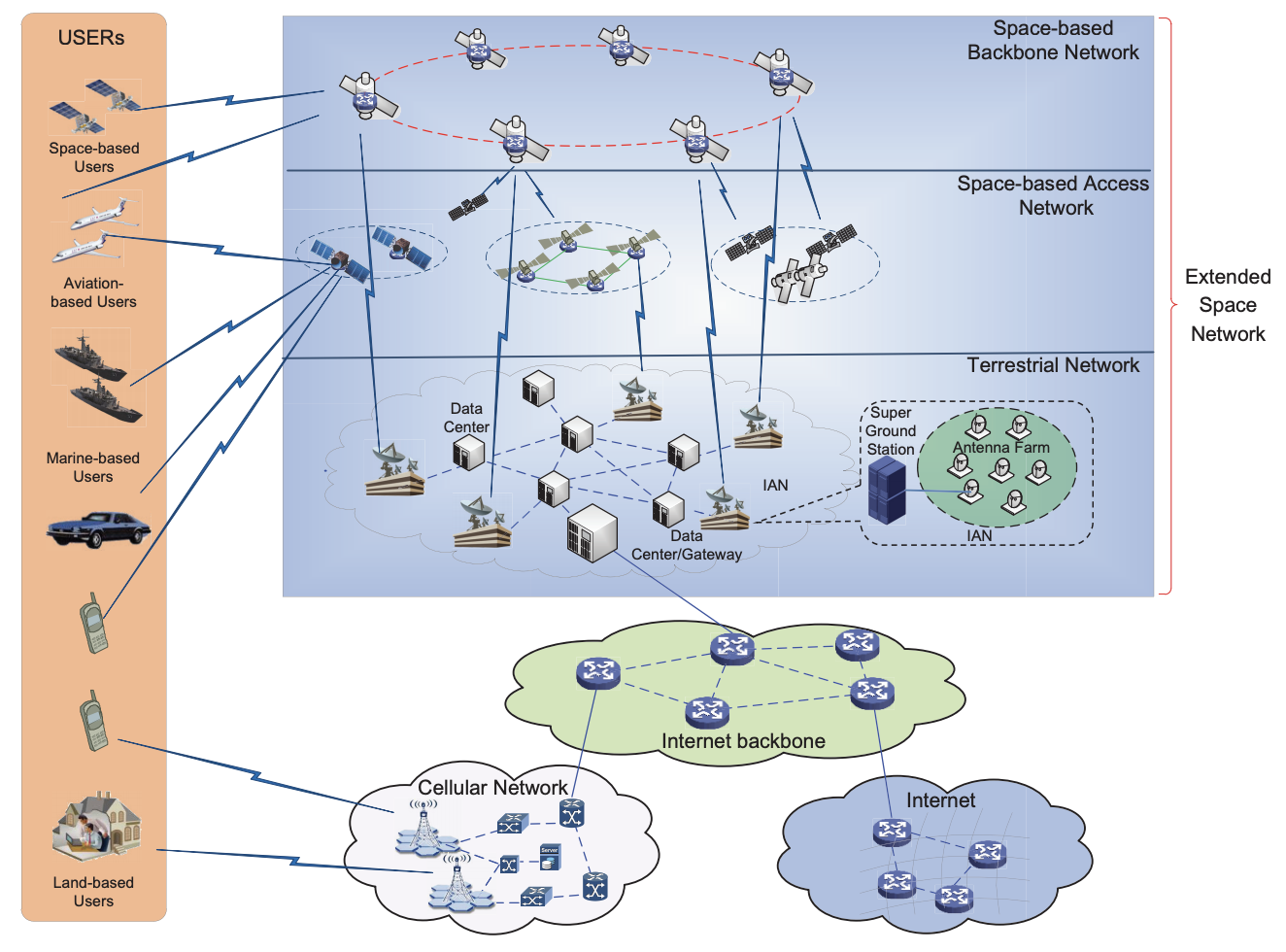Space Network Lab
Introduction
In the past several decades, the field of telecommunications has witnessed explosive growth in terms of technological advancement, which has a deep impact on many fronts of the human society. By and large, there are three major types of telecommunication infrastructures: satellite systems, the Internet, and mobile wireless systems such as cellular networks and local area networks. Since the launch of the first artificial satellite in 1957, the number of satellites orbiting the Earth has been rapidly increasing. One or several of these satellites form an autonomous system (AS) from other satellites to provide some specific services, such as telecommunications, surveillance, remote sensing, positioning, navigation, and so on. Across different satellite systems, realtime resource and information sharing is typically impossible. Moreover, many satellite systems cannot provide consistent coverage in large areas due to limited illuminating time and region.

Image source: H. Yao, L. Wang, X. Wang, Z. Lu and Y. Liu, “The Space-Terrestrial Integrated Network: An Overview,” in IEEE Communications Magazine, vol. 56, no. 9, pp. 178-185, Sept. 2018.